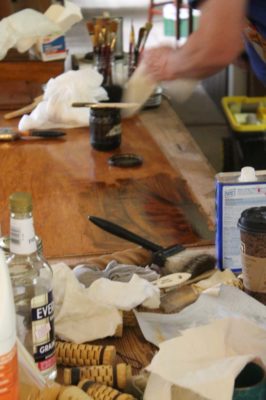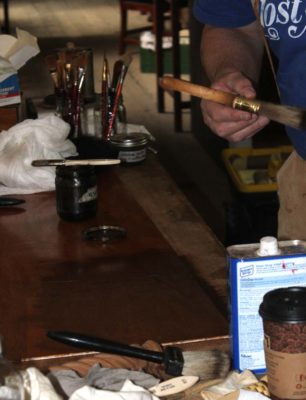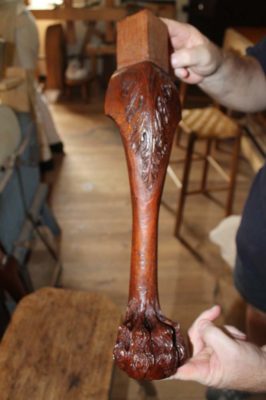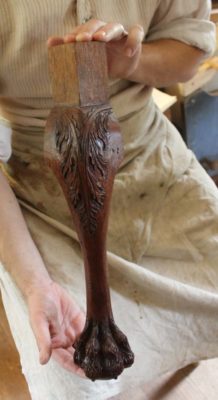Finishing Workshop @ CW – Asphalt Glazing
We are not the first woodworkers who ever wanted to tweak the coloration of our pieces; the ancients routinely augmented their work with the addition of colorants to both unify overall tonality and accentuate details. Among the most common colorants of the past were asphalt, that useless contaminate that percolated up from the ground, and pitch, which is the residue from the fractional distillation of pine sap into turpentine solvent and colophony resin.

For this workshop I showed and the CW crew used asphalt as a toning glaze. My source for this was some non-fibered parging tar left over from the barn basement construction. The three gallons I have left are all I and a thousand friends need for decades. I thin the asphalt with mineral spirits, and occasionally add a bit of boiled linseed oil.



The asphalt glaze can be applied to the surface and manipulated with bristle brushes to achieve an overall uniform appearance. For carved surfaces it could be applied the same way with the highest points rubbed with rags to remove the colorant and emphasize the three-dimensionality of the surface.



Asphalt can be overcoated with shellac as soon as it is dry to the touch.


Join the Conversation!